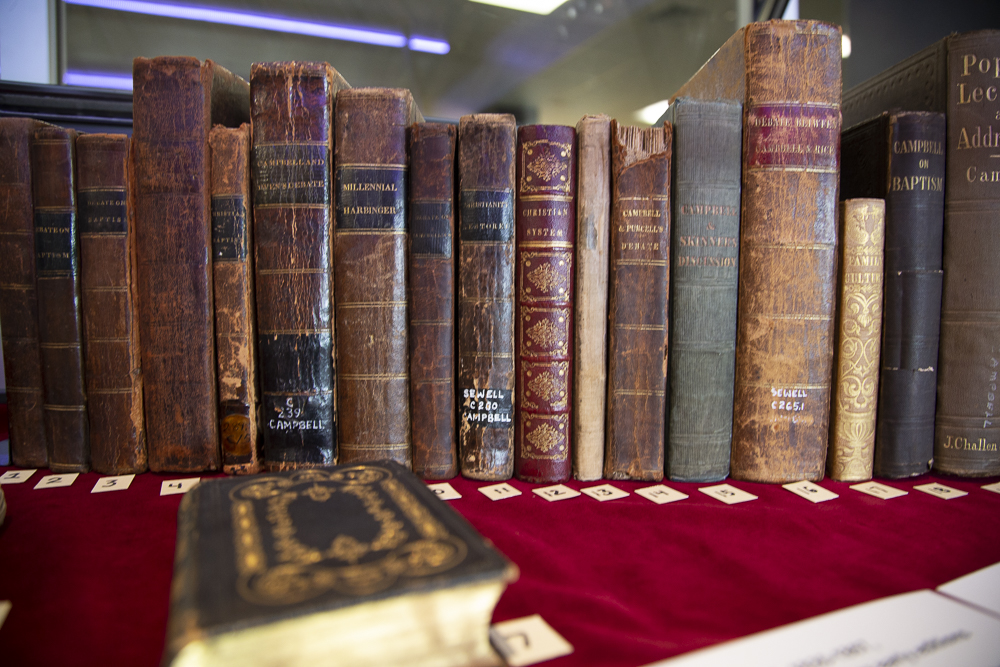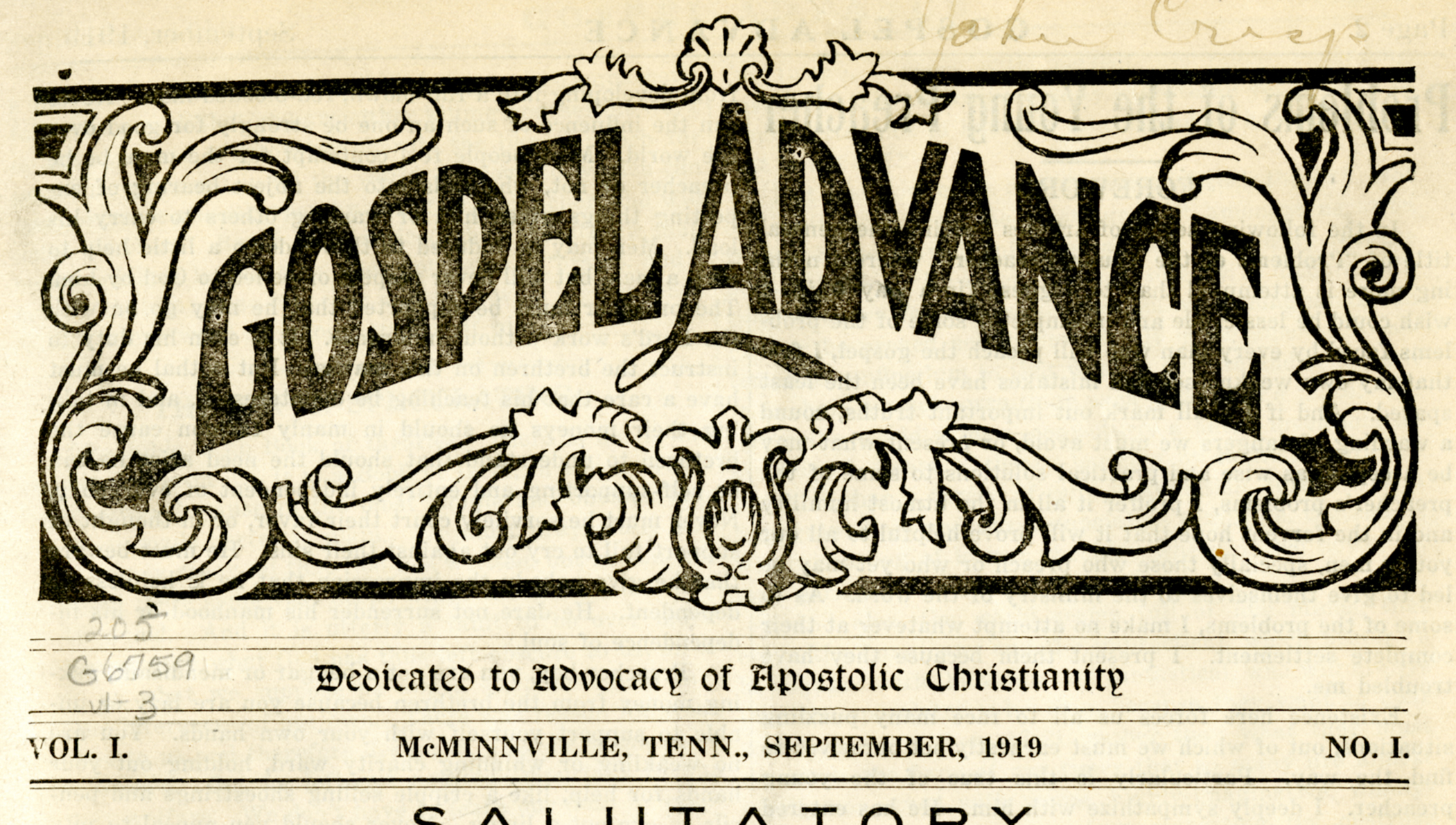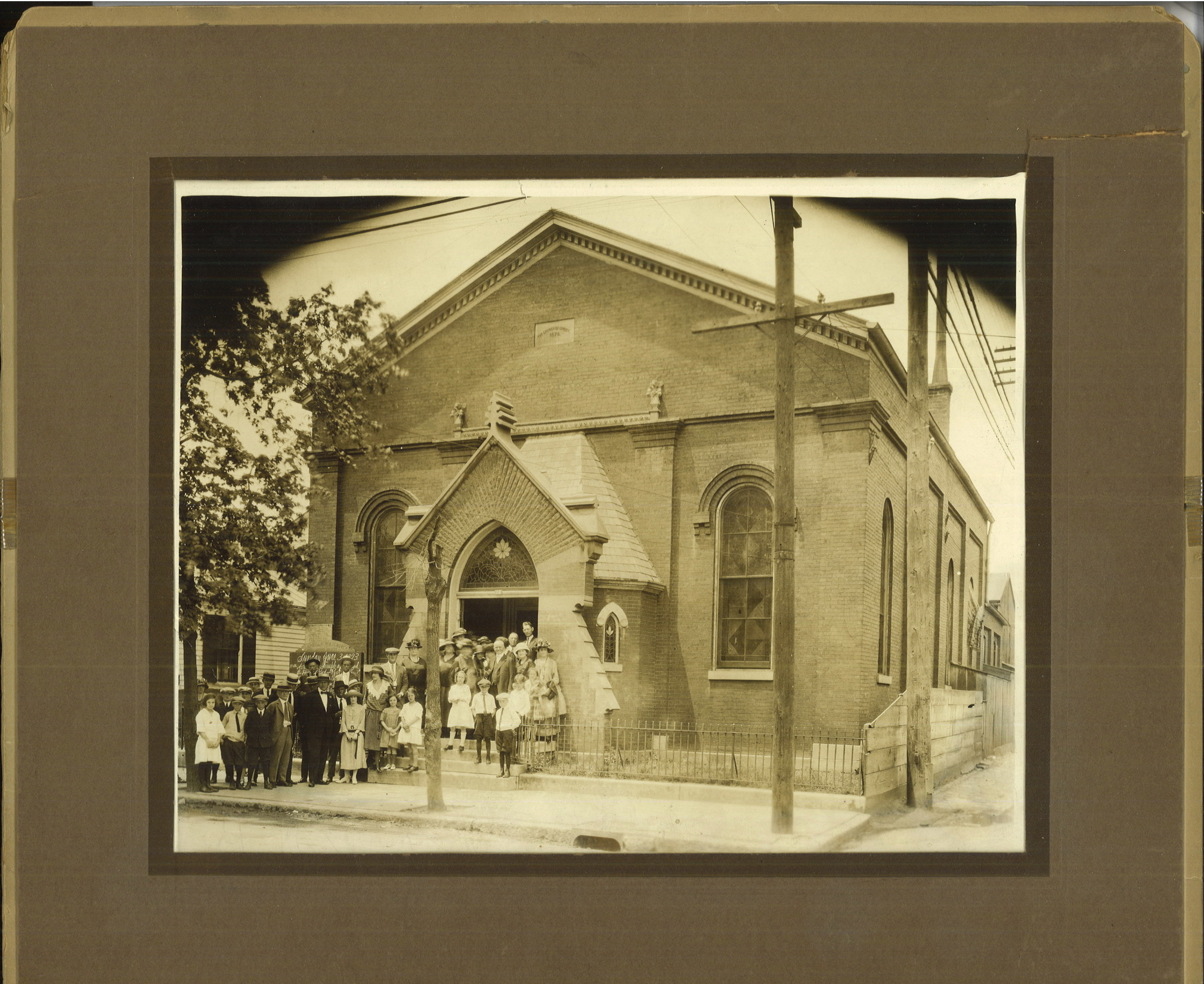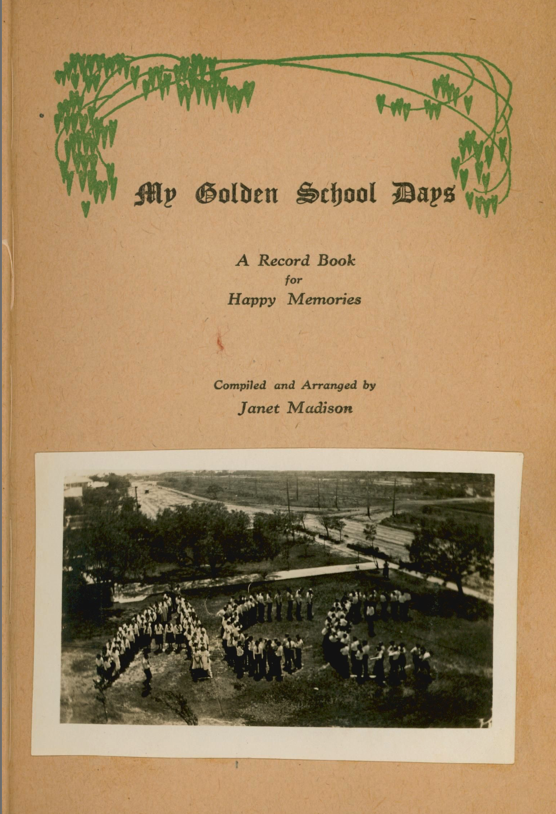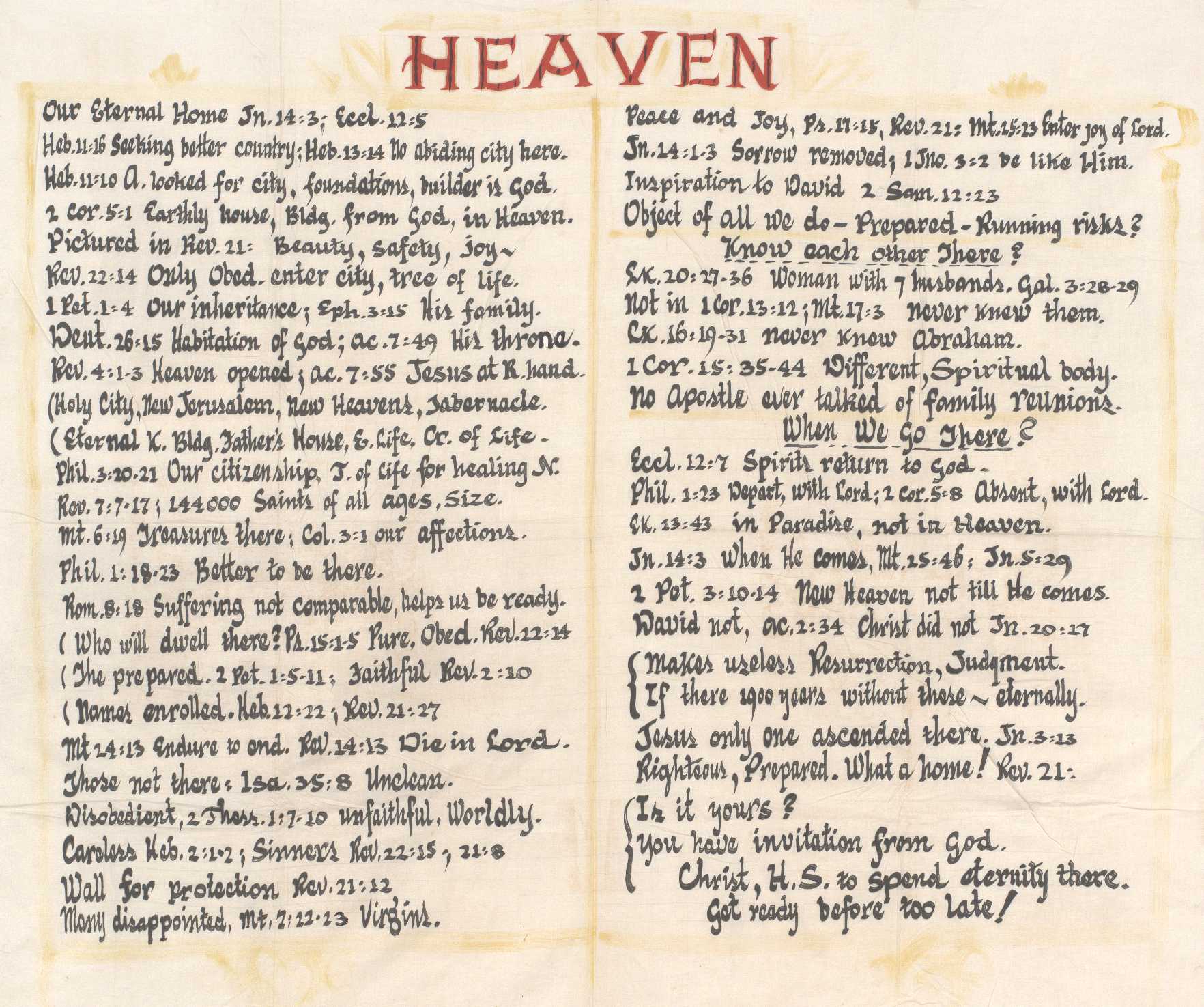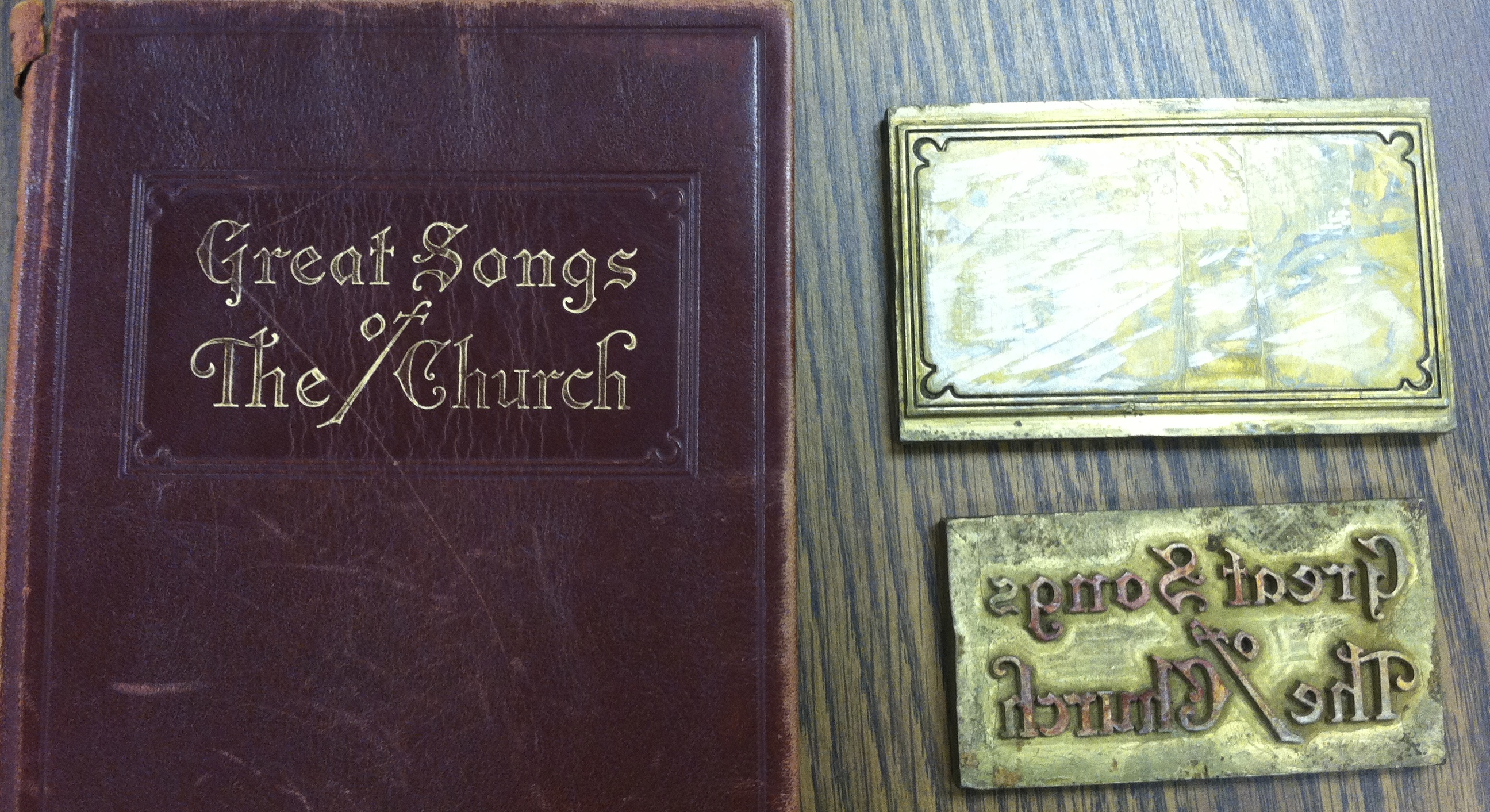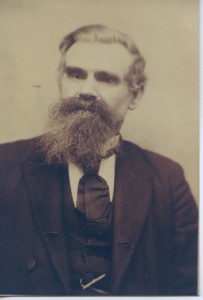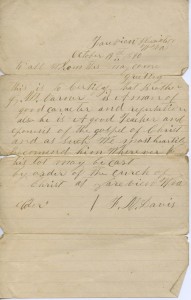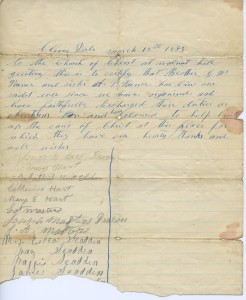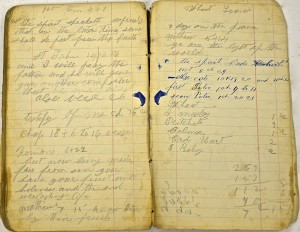Here is a letter of dismissal from the Church of Christ at Lone Oak, Texas, to Eunice Wells, dated “1st Lord’s day January, 1892.” The letter commends Eunice to a congregation of “Disciples of Christ wherever [it] may be presented.” This was a common practice until well into the 20th century. The occasion prompting the letter was a move from Lone Oak that would eventually take her to far West Texas.
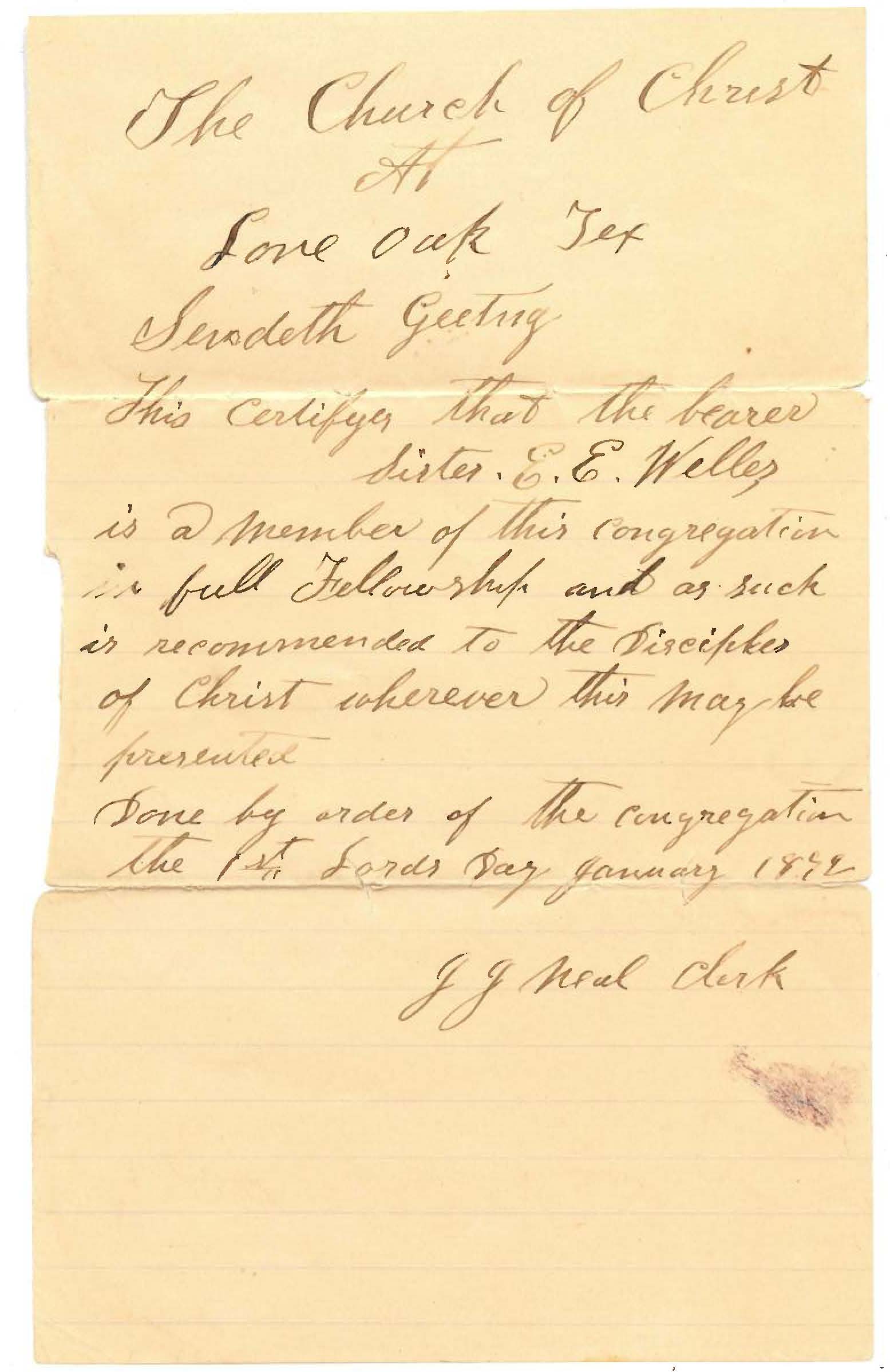
A letter of dismissal from the Church of Christ at Lone Oak, Texas, to Eunice Wells, dated “1st Lord’s day January, 1892,” Texas–Lone Oak, Congregational Vertical File. Center for Restoration Studies. Milliken Special Collections, Brown Library. Abilene Christian University, Abilene, TX.
Eunice Emily Davis Wells Thompson is the great-grandmother of Dr. Kenneth Pybus, ACU Associate Professor and Chair of Journalism and Mass Communication, who supplies this information: “My great-great-grandmother, Eunice Emily Davis Wells Thompson, was born in 1839 in Tennessee. She moved to East Texas as a child and married Ed Wells. They lived in Lone Oak and had four sons. After she was widowed, she married James R. Thompson and had another son. She and several sons left Lone Oak in 1892, moving for a time to Archer City and ultimately to Quanah, Texas, where she died at age 79. Several of her Wells and Thompson descendants attended ACU, including my grandfather, Sanford Rodgers Thompson, my sister, and several of my cousins. In fact, I know of one third cousin who went to ACU who’s a descendant, Gaylynn Wells Neas. (’92).”
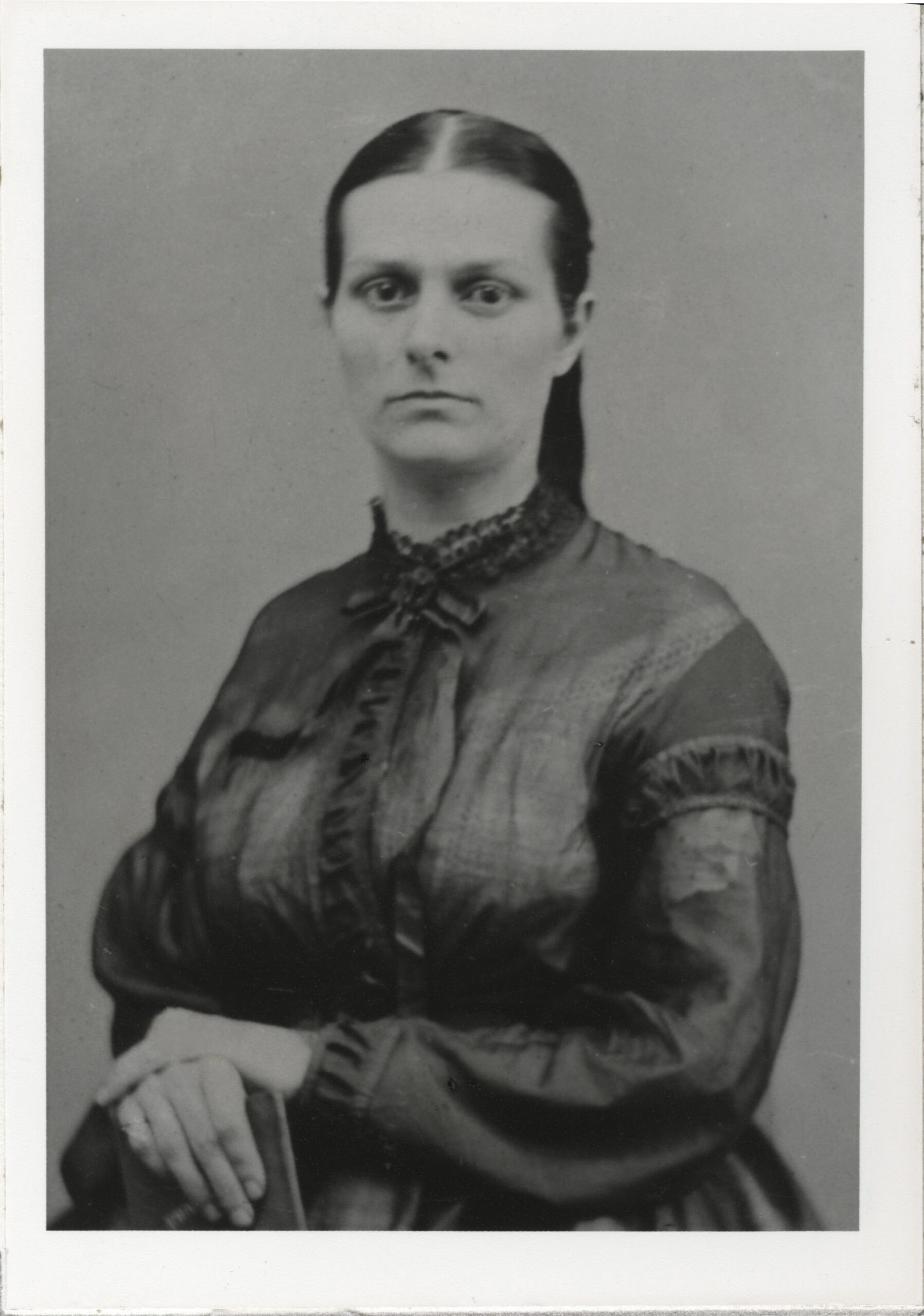
Photograph of Eunice Wells, ca. 1892, Texas–Lone Oak, Congregational Vertical File. Center for Restoration Studies. Milliken Special Collections, Brown Library. Abilene Christian University, Abilene, TX.
Kenneth’s grandfather donated the letter several years ago. He says, “Sanford Rodgers Thompson (‘41). He was a resident of Lake Jackson, Texas, and was employed as a chemist by Dow Chemical. He served as an elder at Lake Jackson Church of Christ for 40 years and died Feb. 18, 2010.”
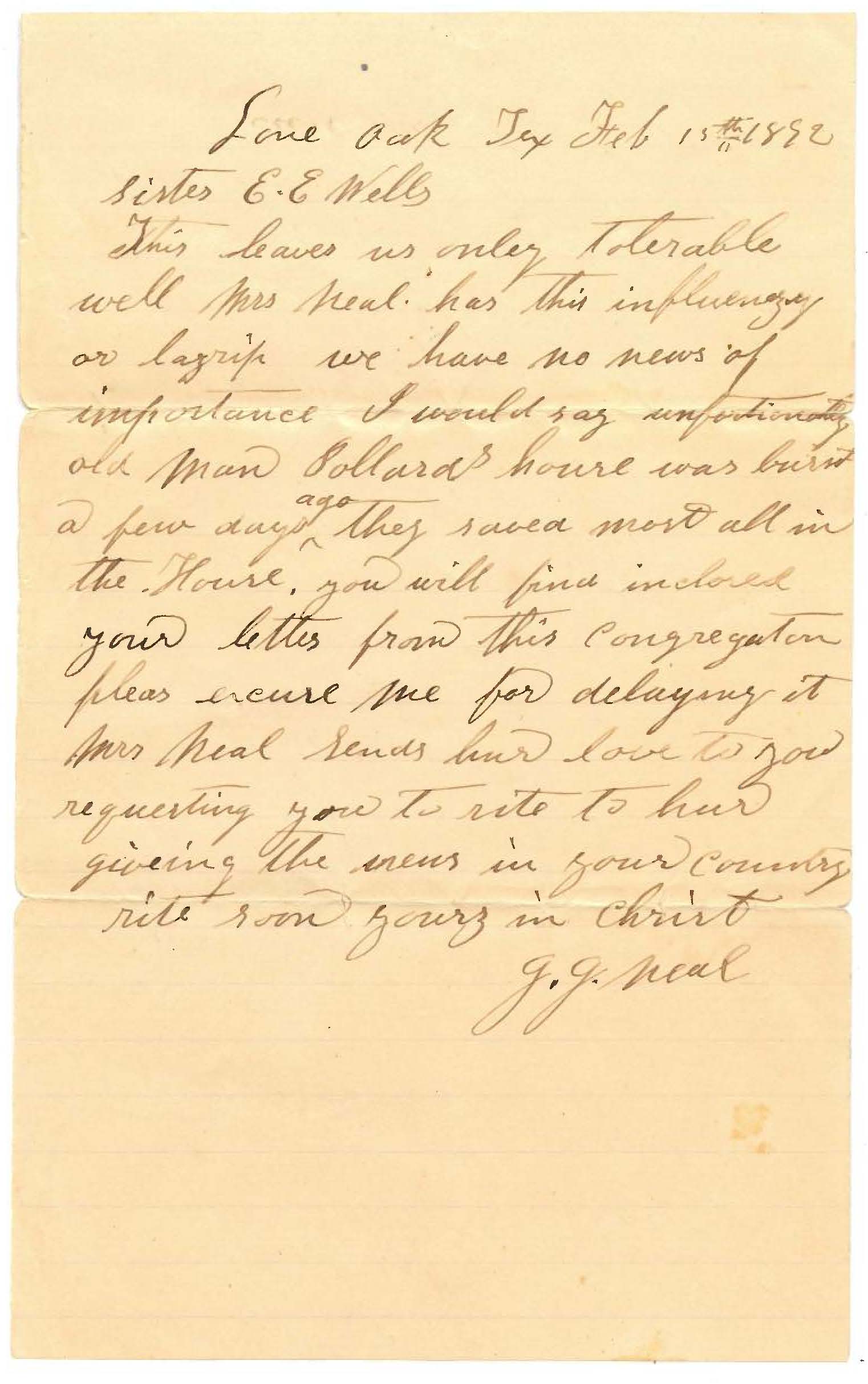
Correspondence accompanying a letter of dismissal from the Church of Christ at Lone Oak, Texas, to Eunice Wells, dated “1st Lord’s day January, 1892,” Texas–Lone Oak, Congregational Vertical File. Center for Restoration Studies. Milliken Special Collections, Brown Library. Abilene Christian University, Abilene, TX.
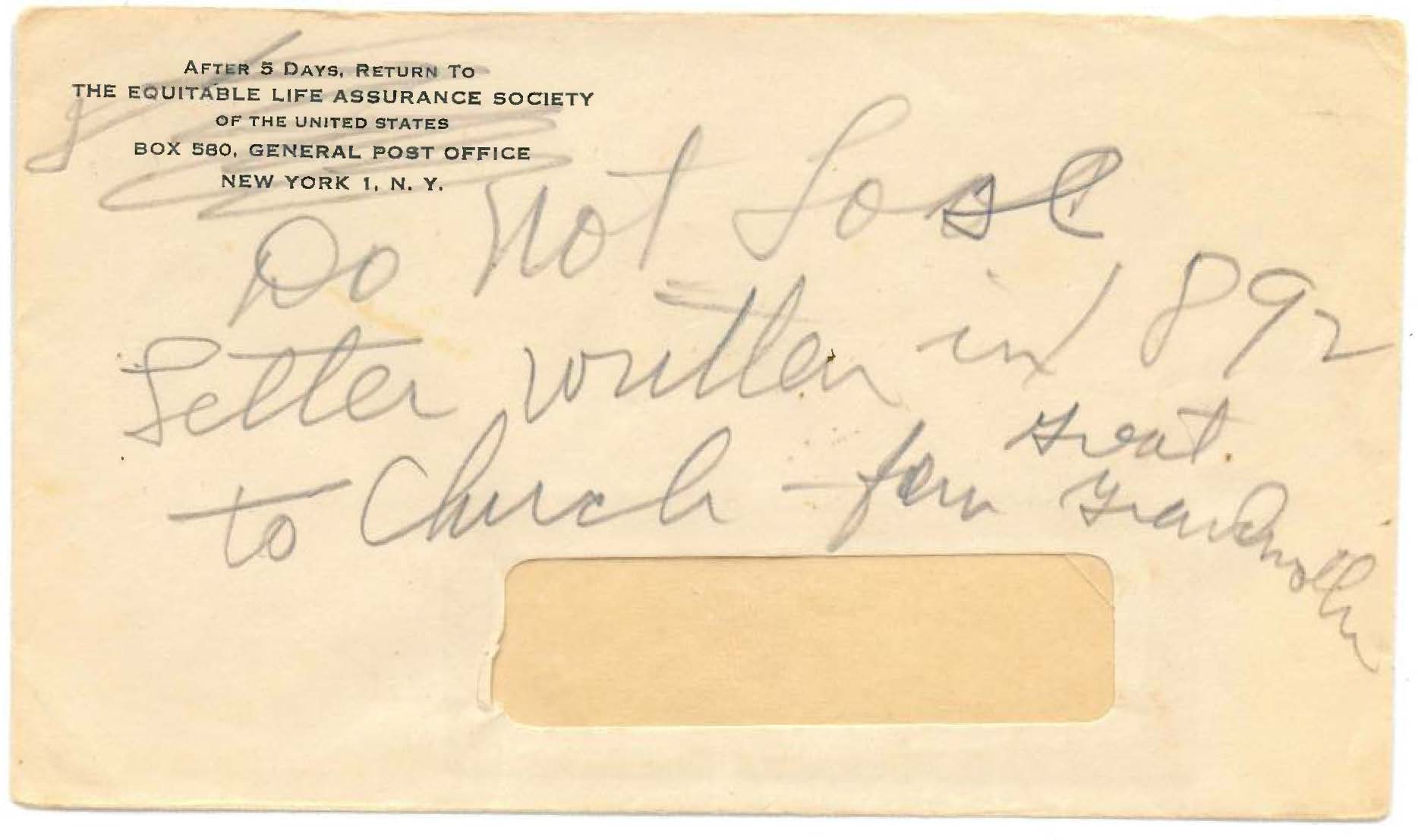
Envelope accompanying letter of dismissal from the Church of Christ at Lone Oak, Texas, to Eunice Wells, dated “1st Lord’s day January, 1892,” Texas–Lone Oak, Congregational Vertical File. Center for Restoration Studies. Milliken Special Collections, Brown Library. Abilene Christian University, Abilene, TX.
Kenneth sent us this photograph of Eunice, taken about the time she moved from Lone Oak. This is a very nice example of a church dismissal letter, and one of the few in our collection. It is also especially nice to have a photograph to accompany the letter.

